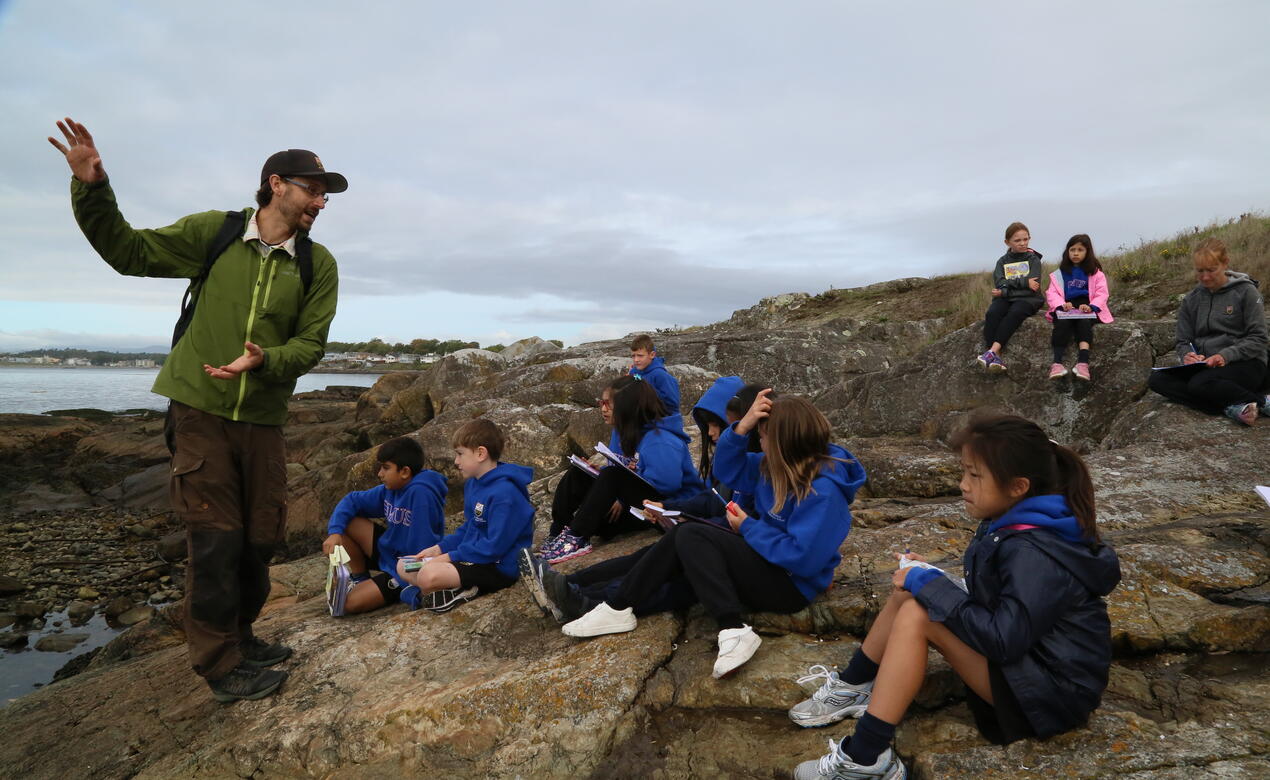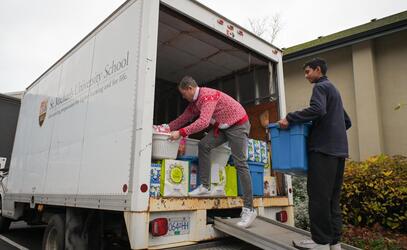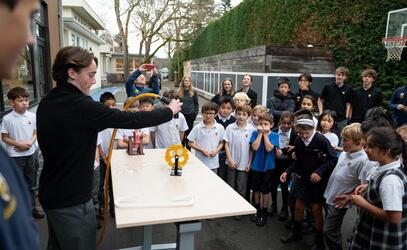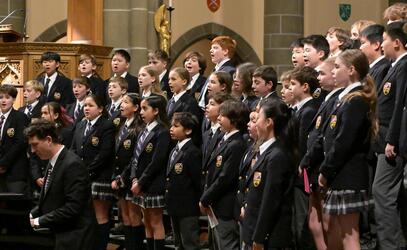
This school year at SMUS has seen many changes, and one of the big ones at our Junior School has been the expansion of the outdoor education program. Every student, Kindergarten through Grade 5, now spends half a day each week learning outside, rain or shine.
Outdoor education has been a part of the Junior School experience for a number of years and has proven to be an excellent way to develop group dynamics, reinforce classroom learning and foster connections with nature. We are extremely fortunate at the Junior School to be located walking distance to the beach and to beautiful local parks for our students to enjoy. As we begin our second term at school, I wanted to share some of the outdoor education highlights of the first term.
Adapting to a New Learning Environment
In the Grade 11 Outdoor Leadership course at the Senior School, one criterion on which students are evaluated is their tolerance for uncertainty and adversity. If I were to apply this criterion to our youngest students at the school, I would consistently award them top marks. The beginning of the year not only brought with it new rules and regulations around COVID-19 but it also brought wildfire smoke, rainy wet days and gale force winds. And all the while the students at the Junior School have been excited to get outside, learn, and experience the natural wonders we are so lucky to have on our doorstep.
Our younger grades have been no exception, especially those in Kindergarten. One very rainy Friday in the fall, the Kindergarten class built their own tents. We gave a demonstration on how to put the tents together, and then we watched the students work in small groups to build their own tent. With little support from adults, each child took on their own roles to support the tent building. It was amazing to see the collaboration and tenacity as they worked through some of the obstacles that arose. After the tents were built, the students celebrated by eating their snacks under cover, chatting with friends and visiting each other’s tents.
Another highlight was taking the Grade 2 class to spend the morning storm watching from Beach Drive. The waves were so big that day that the spray was crossing the road. We crouched behind the bushes hiding from the wind until one courageous student ventured out and, leaning in to the full force of the wind and spray from the waves, she started yelling with delight as wave after wave crashed and sprayed her until she was soaked to the bone. It wasn't long before the entire class joined in and were thoroughly drenched from the ocean's spray. At dismissal that day, one of the students came up to me and said that was the best outdoor day yet!
Reinforcing Classroom Learning Outside
The big goals of the expanded Junior School outdoor education program have been to encourage stepping out of our comfort zone, working collaboratively and reinforcing classroom learning outside in the natural world.
The Grade 5 classes have been studying geology and many of our trips to the beach have included the collection of pebbles for further study back in the classroom. In Grade 4, we have focused on map and compass skills to tie in with their classroom learning. Students not only learned to use a paper map and a compass, they also applied digital skills, using GPS to create maps and gather information about Anderson Hill. The Grade 3s have been working on a project in class where they create an animal that demonstrates adaptation. One day while discussing the topic of adaptations we were lucky enough to have a juvenile bald eagle land in a tree 20 feet above our heads. What a great way to observe and talk about an eagle's eyes and sharp talons.
Each day we venture out we follow a similar structure: we play a group game, have a lesson or an activity, take some time to explore nature and then finish with a sit spot. Sit spots are a great way to connect with a place by using your senses to become more aware of your surroundings. Students sit on their own quietly for a few minutes without talking or fidgeting and connect with nature.
Our students love experiencing and learning in the outdoors, so my challenge to you is to get outside as a family and experience nature no matter the weather. Get out in the rain and the wind and explore a new local park or try practicing a sit spot. Follow the lead of our youngest students who have shown incredible resilience and don't let the winter weather keep you inside.
If you are looking for fun games or activities to do with your child, I encourage you to check out this Google Map for new locations and fun challenges. There are also great apps that you can download to help make learning outdoors engaging in a different way. One of my favourites is iNaturalist, which helps you identify plants and animals, and using it helps contribute to citizen science.
We live in an amazing place, so get out and explore the many wonders we can find in our own backyards.



